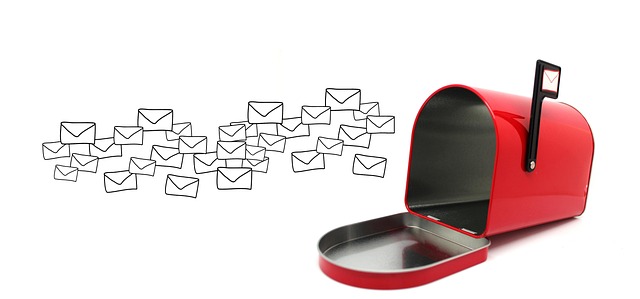Email Marketing vs. Social Media: Which One Drives Better ROI?

Choosing between email marketing and social media for the best return on investment can feel like a puzzle. We all aim to stretch our marketing dollars as far as they will go but might not know where to start.
I remember wrestling with this dilemma, trying to figure out which channel would make my investment worthwhile.
Then, I stumbled upon a game-changing piece of information: email marketing generates $36 for every $1 spent. Armed with this insight, I decided to dive deeper into how each platform stacks up in terms of different performance metrics.
This blog post unfolds the strengths of both digital marketing channels and highlights when to use them effectively. You’ll discover how they complement each other to elevate your strategy.
Are you ready to dive in? Let’s get started!
Core Insights
- Email marketing generates $36 for every $1 spent, showing a higher ROI than social media. This channel delivers 40 times more sales and has measurable results that allow for strategy refinements based on performance data.
- Social media excels in brand awareness and visual engagement but doesn’t directly drive as many sales as email marketing. It provides a platform for real-time interaction with customers, building brand loyalty and expanding reach through engaging visuals.
- Combining email marketing with social media can enhance overall campaign effectiveness. Using both channels allows for cross-channel list building, content amplification, and advertising integration to boost audience engagement and return on investment (ROI).

The Benefits of Email Marketing
Email marketing offers high conversion rates that can boost sales. I appreciate how it provides measurable results, allowing me to see what works and what doesn’t.
High conversion rates
High conversion rates define email marketing. I find that email generates 40 times more sales than social media. This impressive figure shows how effective emails can be for driving conversions.
They connect directly with a subscribed audience, leading to targeted communications.
Statistics reveal that email marketing delivers an average return of $36 for every $1 spent. This high ROI proves the channel’s effectiveness in generating sales and nurturing leads.
In my experience, focusing on email can significantly boost results compared to other marketing platforms.
Measurable results
Measurable results stand out as a significant advantage of email marketing. I can track every aspect of my campaigns, from open rates to click-through rates. This tracking helps me understand what works and what doesn’t.
Email generates 174% more total conversions than social media, making it easier to gauge effectiveness.
The data shows that email marketing has an impressive average return on investment (ROI) of $36 for every $1 spent. In my experience, this measurable nature allows me to refine strategies based on real feedback.
Unlike social media efforts that focus more on brand awareness and engagement, email targets dedicated subscribers and drives sales effectively.
Personalized communication
Personalized communication stands out in email marketing. I can tailor messages to match my audience’s interests and needs. This approach leads to 40 times more sales than social media efforts.
Subscribers appreciate receiving content that resonates with them, which boosts engagement. Statistics show that email drives 174% more total conversions compared to social media platforms.
Crafting emails with personal touches makes a difference in customer relationships. My audience feels valued when they receive targeted offers or relevant information directly related to their preferences.
The effectiveness of personalized communication reinforces the power of email marketing as a tool for successful campaigns. Now, let’s explore how social media marketing enhances brand awareness and visual engagement.
List ownership
Personalized communication leads to stronger connections with customers. Owning an email list is a significant advantage for marketers. Unlike social media, I have complete control over my email subscribers.
With email marketing, I engage directly with a dedicated audience. This ownership means my messages reach people who genuinely want to hear from me.
Email marketing can generate 40 times more sales than social media. My list gives me the power to target and convert effectively. It isn’t just about reaching wide audiences; it’s about engaging the right ones through effective content marketing strategies.
Data shows that email generates 174% more total conversions compared to social media platforms. Each subscriber represents a valuable opportunity for lead generation and sales growth in my online marketing efforts.

The Benefits of Social Media Marketing
Social media marketing boosts brand awareness and engages users through visual content, making it a powerful tool for connecting with your target audience. Explore this topic further to discover how social media can maximize your marketing efforts!
Brand awareness and reach
I find social media marketing essential for creating brand awareness and expanding reach. Businesses can communicate their messages to a vast audience, increasing visibility. Engaging visuals capture attention and drive interaction.
Social media encourages discovery, allowing new customers to learn about products and services easily.
Effective campaigns get noticed quickly on platforms like Instagram and Facebook. These channels enable real-time engagement with potential customers, fostering connections that lead to more followers or fans.
While email marketing generates 40 times more sales than social media, I still appreciate how social networks play a crucial role in building my brand’s presence online.
Visual content engagement
Brand awareness and reach are important, but visual content engagement takes things to another level. I see that social media thrives on visuals. It uses images and videos to grab attention quickly.
This type of content fosters interaction and connection with the audience. People often engage more with visuals than text alone.
Email marketing can also harness visual elements effectively. Studies show email generates 174% more total conversions than social media. That means emails, when designed well with engaging visuals, can drive sales significantly better than traditional posts on platforms like Facebook or Instagram.
Email marketing costs less and delivers a higher return on investment compared to other channels too. Visuals paired with personalized messages create powerful communication tools that capture attention and lead to action.
Real-time interaction
Building on the benefits of visual content engagement, real-time interaction is another significant advantage of social media marketing. Users crave immediacy in their interactions with brands.
Social media platforms allow businesses to respond quickly to customer inquiries and feedback. This instant communication helps foster strong relationships.
In my experience, timely responses can greatly enhance customer engagement. Businesses using social media can address concerns swiftly and show that they value their audience’s opinions.
This kind of relationship-building often leads to increased brand loyalty and awareness. While email generates 40 times more sales than social media for conversions, the real-time aspect of social platforms plays a vital role in maintaining an active dialogue with customers.
When to Use Email Marketing vs. Social Media
When you want to reach a specific audience, email marketing works best. Social media shines when you aim for broader brand visibility and engagement.
Email marketing for targeted and personalized campaigns
Email marketing excels at creating targeted and personalized campaigns. It focuses on subscribers who choose to receive updates from me. This approach generates 40 times more sales than social media, making it a powerful tool for driving conversions.
I can track measurable results with email, which is crucial for refining my strategies.
The average ROI of email marketing stands at $36 for every $1 spent. This statistic shows the effectiveness of this channel in generating revenue compared to others like social media.
By tailoring messages to specific segments, I increase engagement and foster deeper connections with my audience. Personalization helps me meet their needs directly, ensuring that my messages resonate strongly and drive action.
Social media for brand awareness and visual engagement
Shifting from email marketing, I see social media’s strength lies in its ability to create brand awareness and foster visual engagement. Brands can reach vast audiences through platforms like Instagram and Facebook.
Visual content captivates users quickly and encourages sharing. Social media excels at driving discovery, making it perfect for connecting with potential customers.
I found that emails generate 40 times more sales than social media. Yet, social channels help businesses build their identity in real-time. They allow brands to engage directly with audiences and elevate user interaction.
With eye-catching visuals, unique posts attract attention while promoting products or services effectively. Social media plays a crucial role in my overall marketing strategy by amplifying visibility and extending reach.
How Email Marketing and Social Media Can Work Together
Email marketing and social media can enhance each other’s effectiveness. I can use my email list to promote my social media channels, while sharing engaging content on social platforms helps grow my subscriber base. Want to ensure you get the best results with email marketing, make sure you avoid these 7 main mistakes of email marketing.
Cross-channel list and follower building
Building a cross-channel list boosts my reach and effectiveness. I can grow my email subscriber list through social media campaigns. Each platform offers unique ways to attract followers, but they complement each other well.
Email marketing generates 40 times more sales than social media. This fact shows the importance of nurturing these leads for future conversions. By using both channels, I amplify content and expand audience engagement effectively, leading to better returns on investment.
Content amplification
Content amplification plays a crucial role in maximizing the effectiveness of my marketing efforts. With email marketing, I can share valuable content directly with an interested audience.
This method generates 40 times more sales than social media, showcasing its strength in driving conversions.
Using email campaigns allows me to promote blog posts, videos, and other resources effectively. Emails have proven to deliver 174% more total conversions compared to social media platforms.
The targeted nature of my email list ensures that those receiving the content are already engaged and likely to respond positively. Focusing on amplification through emails ultimately enhances my potential return on investment (ROI).
Email consistently delivers higher ROI than any other channel, making it a vital tool for generating sales and engaging customers effectively.
Advertising integration
I find that advertising integration between email marketing and social media can enhance campaign effectiveness. Email marketing generates $36 for every $1 spent, making it a strong tool for conversions.
Social media excels at brand awareness and engagement but falls short on direct sales. By combining both channels, I can amplify my message and reach a wider audience.
Integrating these platforms allows me to build my list while engaging followers in real time. Email generated 174% more total conversions than social media, proving its strength in driving sales.
Using ads on social channels leads people back to personalized email content, creating a seamless experience that boosts overall ROI.
FAQs
1. What is the difference between email marketing and social media in driving ROI?
Email marketing and social media are both effective tools for businesses, but they drive ROI differently. Email marketing statistics show that it can be highly effective because you reach out directly to your customers. Social media, on the other hand, excels in discovery and engagement of new potential customers.
2. Which one should I choose if I have a limited marketing budget?
Both platforms have pros and cons when working with a limited budget. Email marketing can provide more direct communication with your audience while social media allows for broader reach. The choice depends on your business needs and goals.
3. How effective is email marketing compared to social media?
The effectiveness of email marketing versus social media varies based on the target audience’s preferences as well as the nature of your product or service. However, according to some studies, email has been shown to generate higher conversion rates than social media.
4. Can combining both strategies improve my ROI?
Yes! Combining both strategies could potentially maximize your return on investment by leveraging the strengths of each platform: direct customer interaction through emails and broad visibility through social networks.